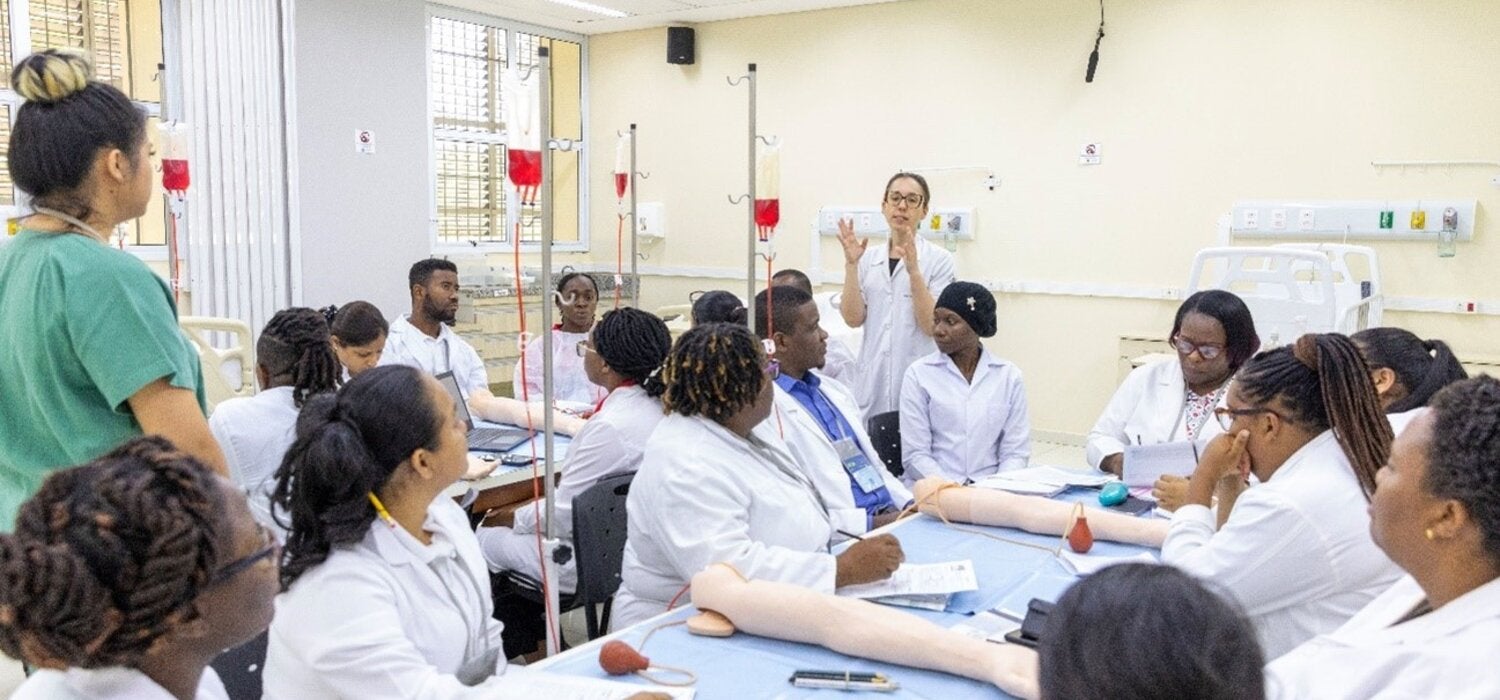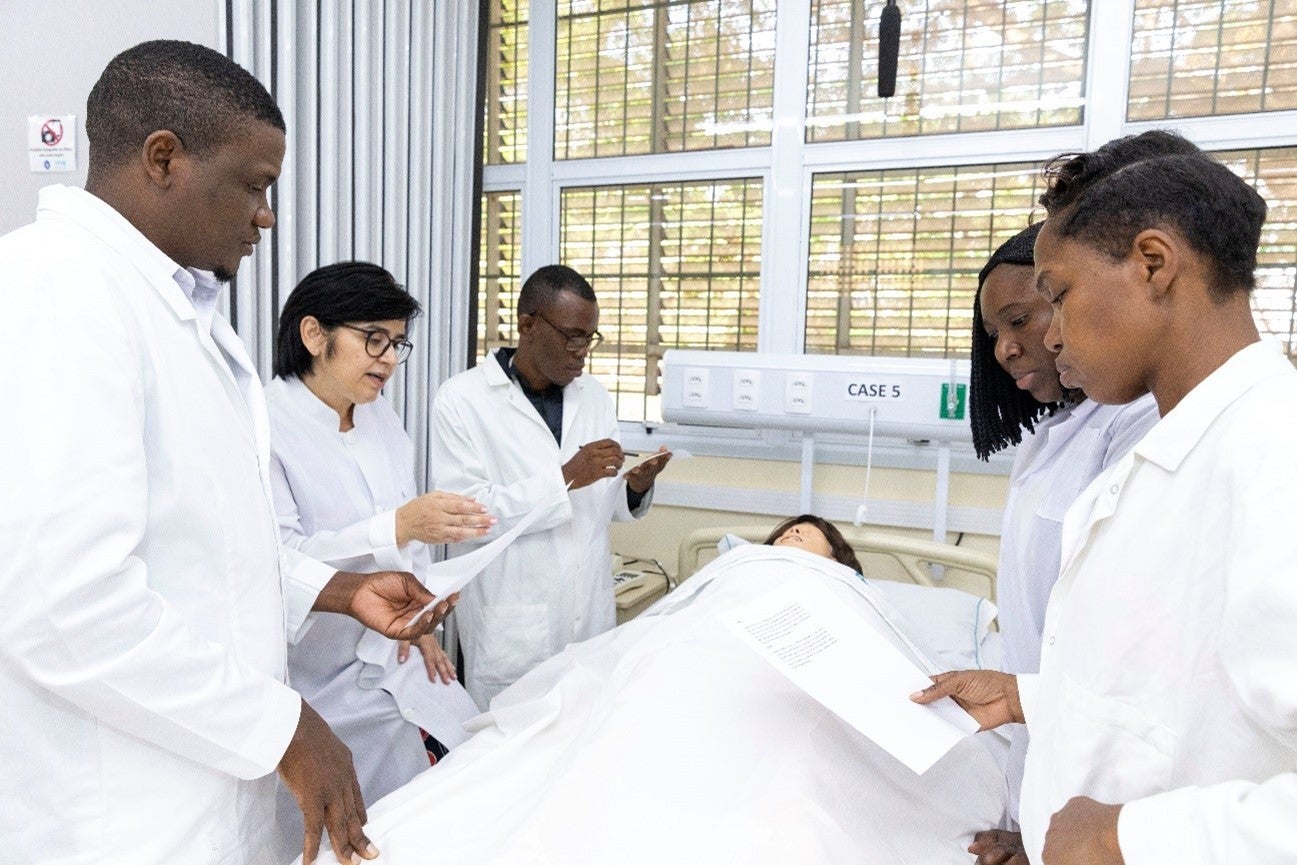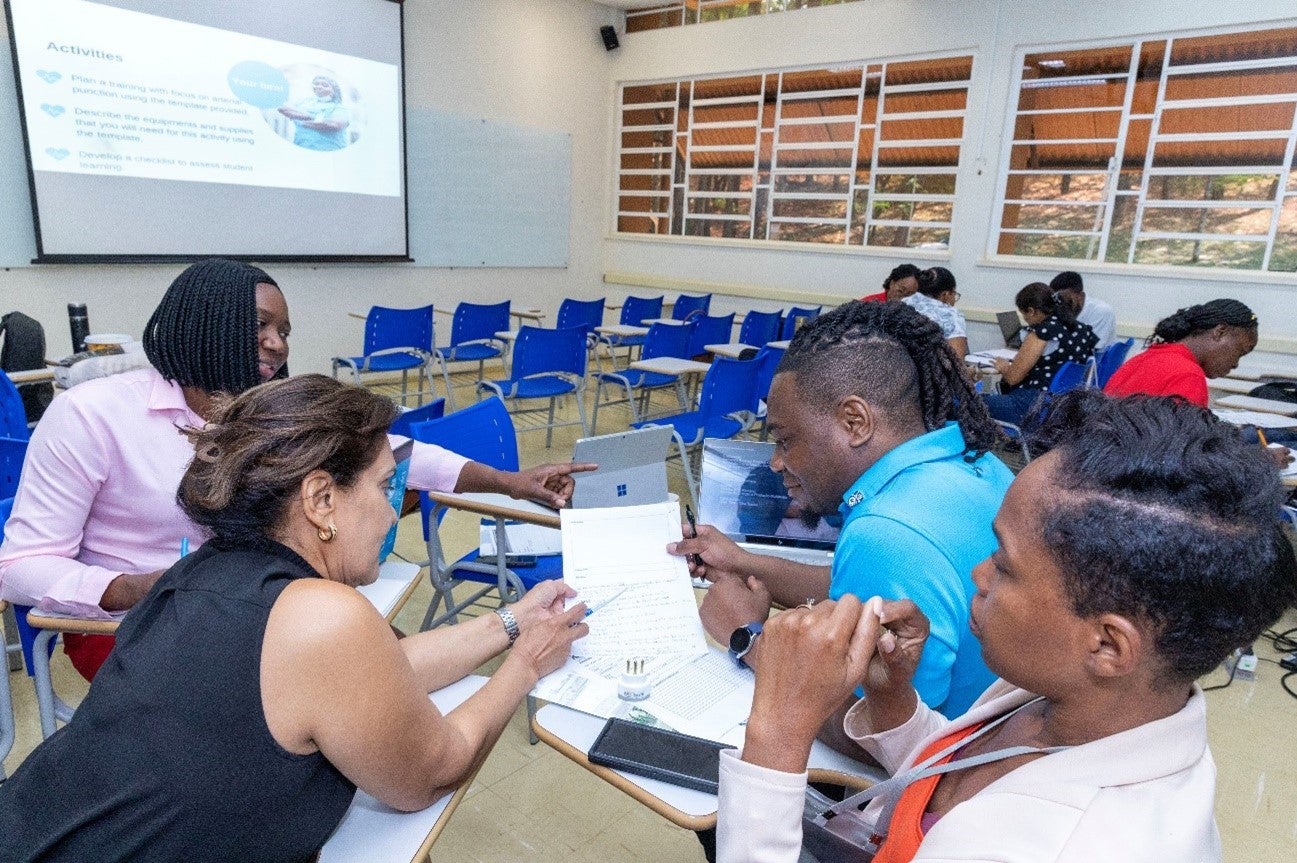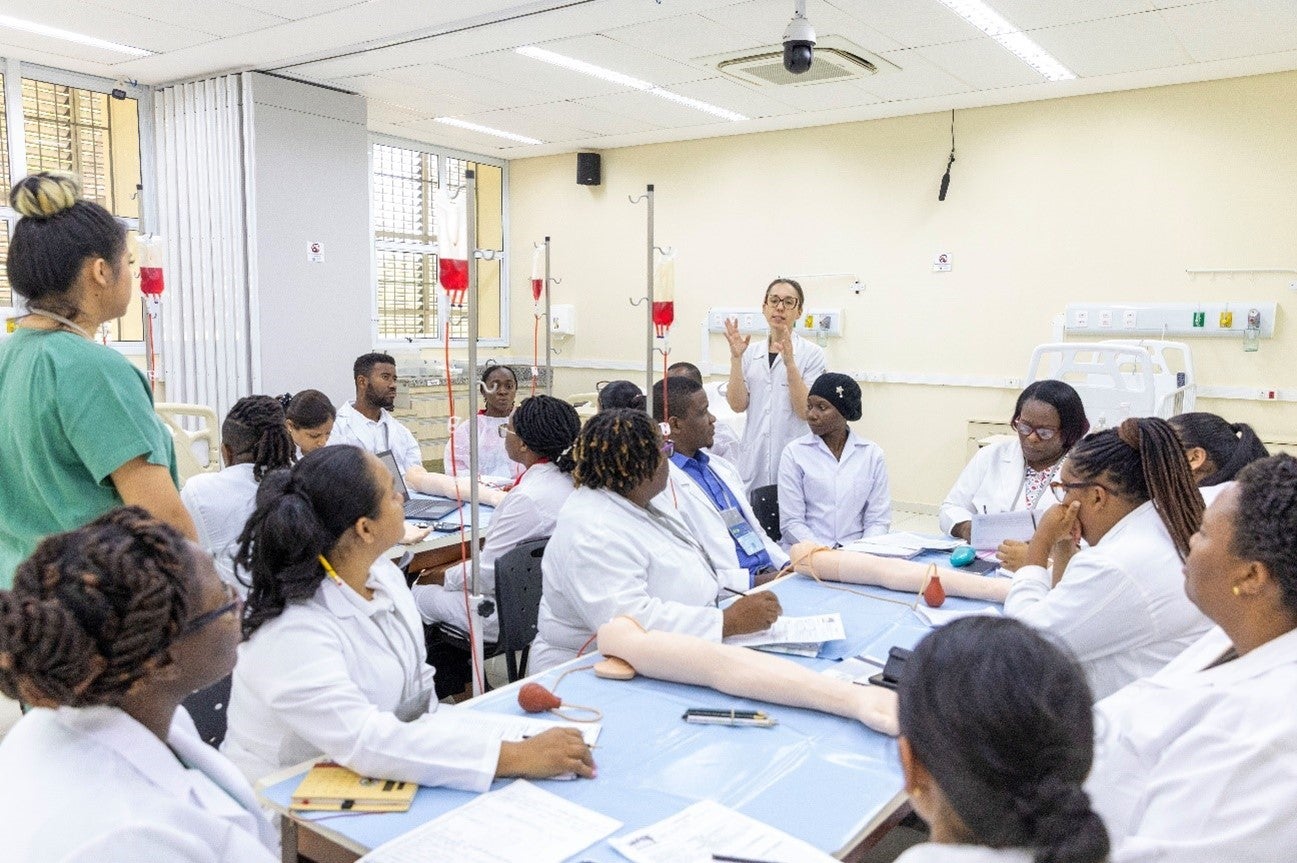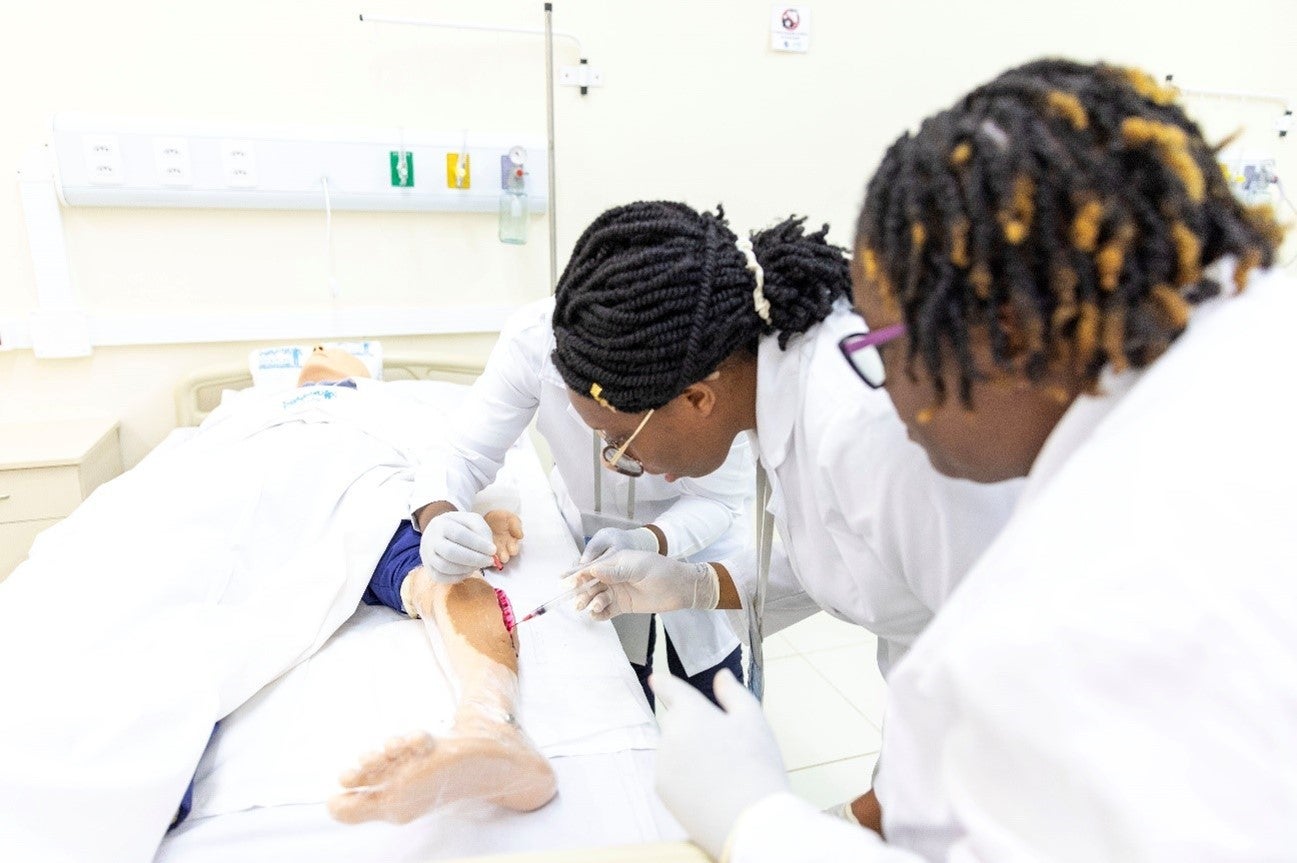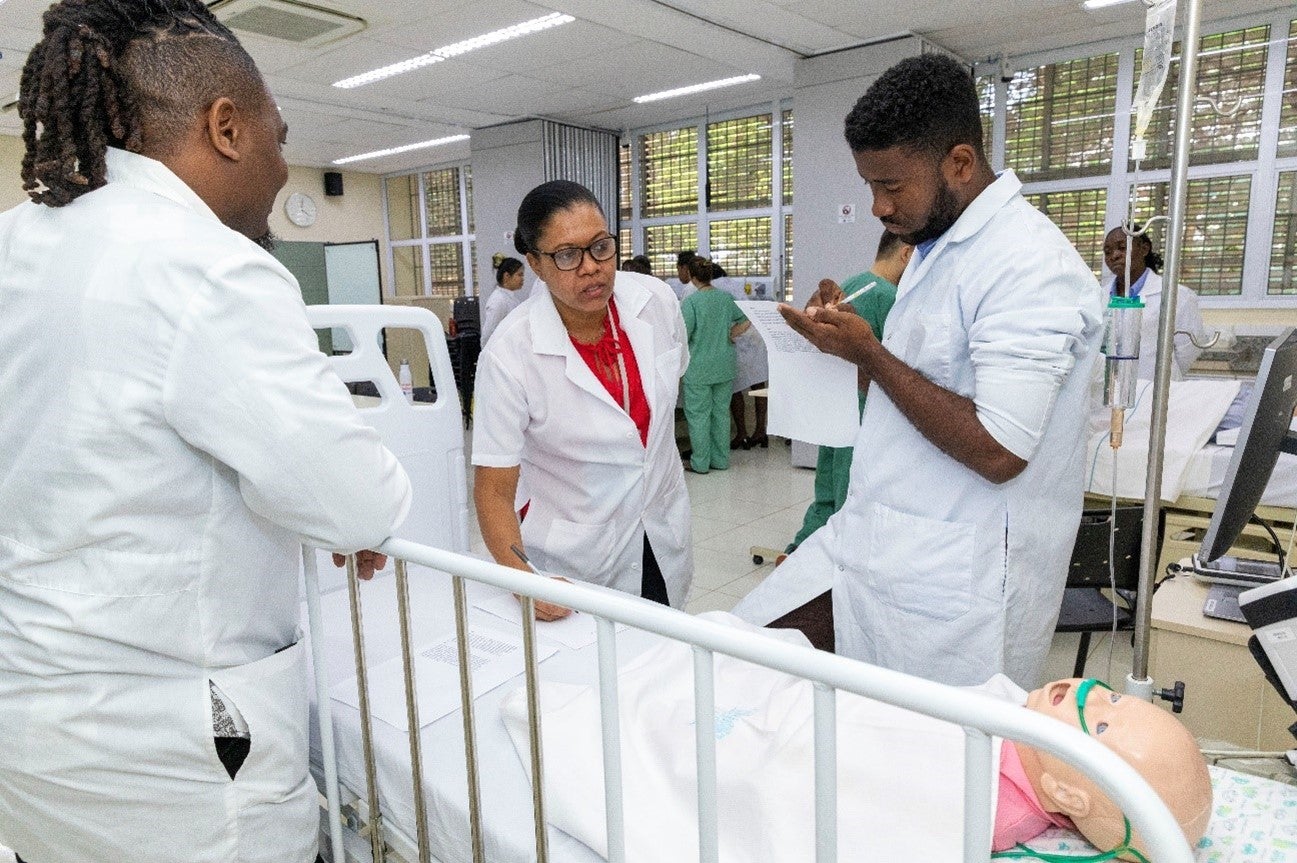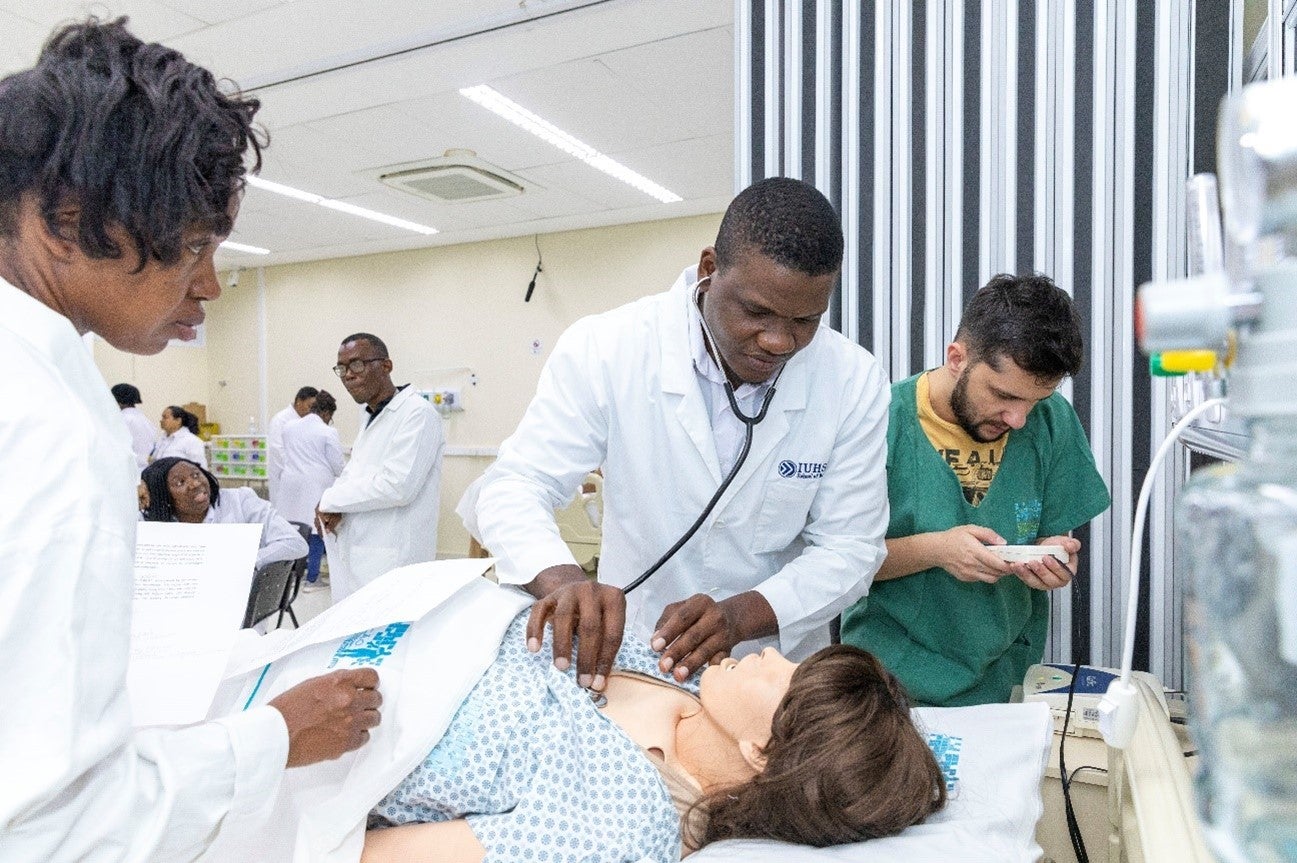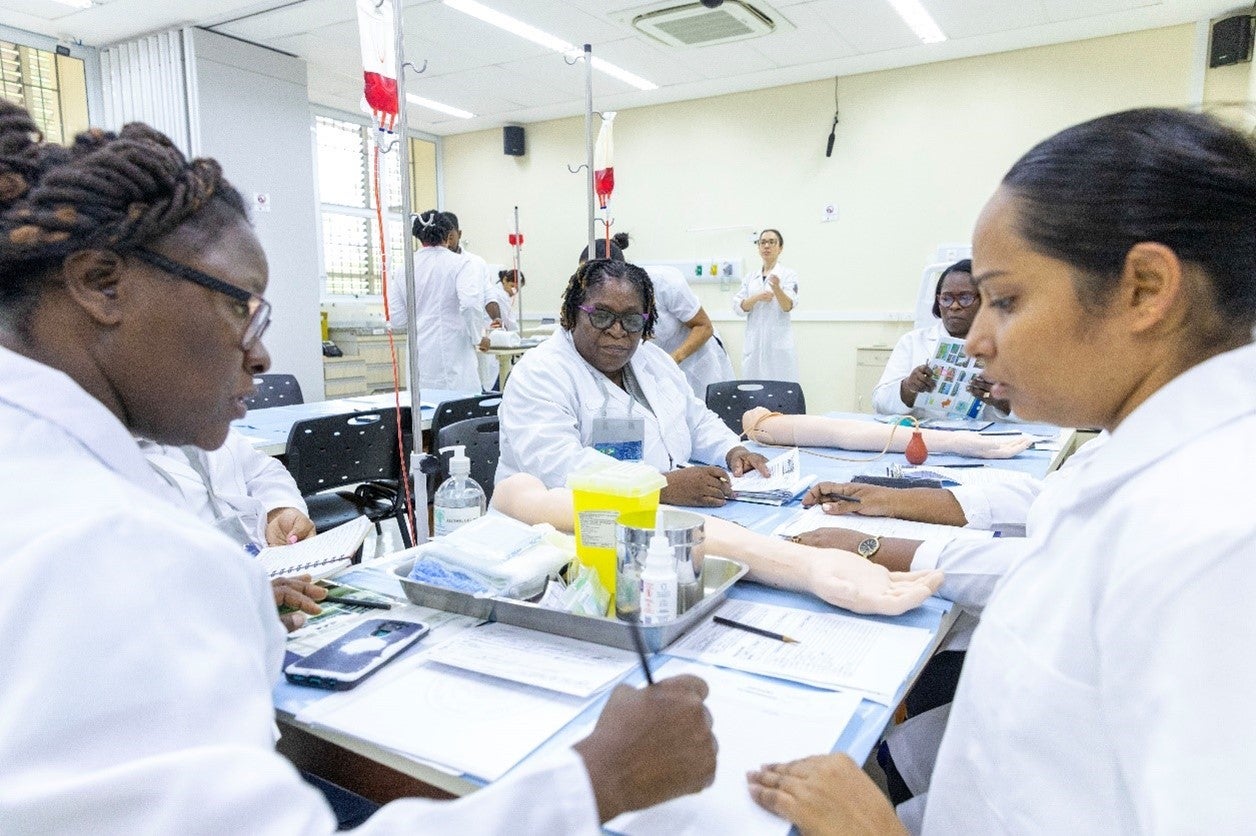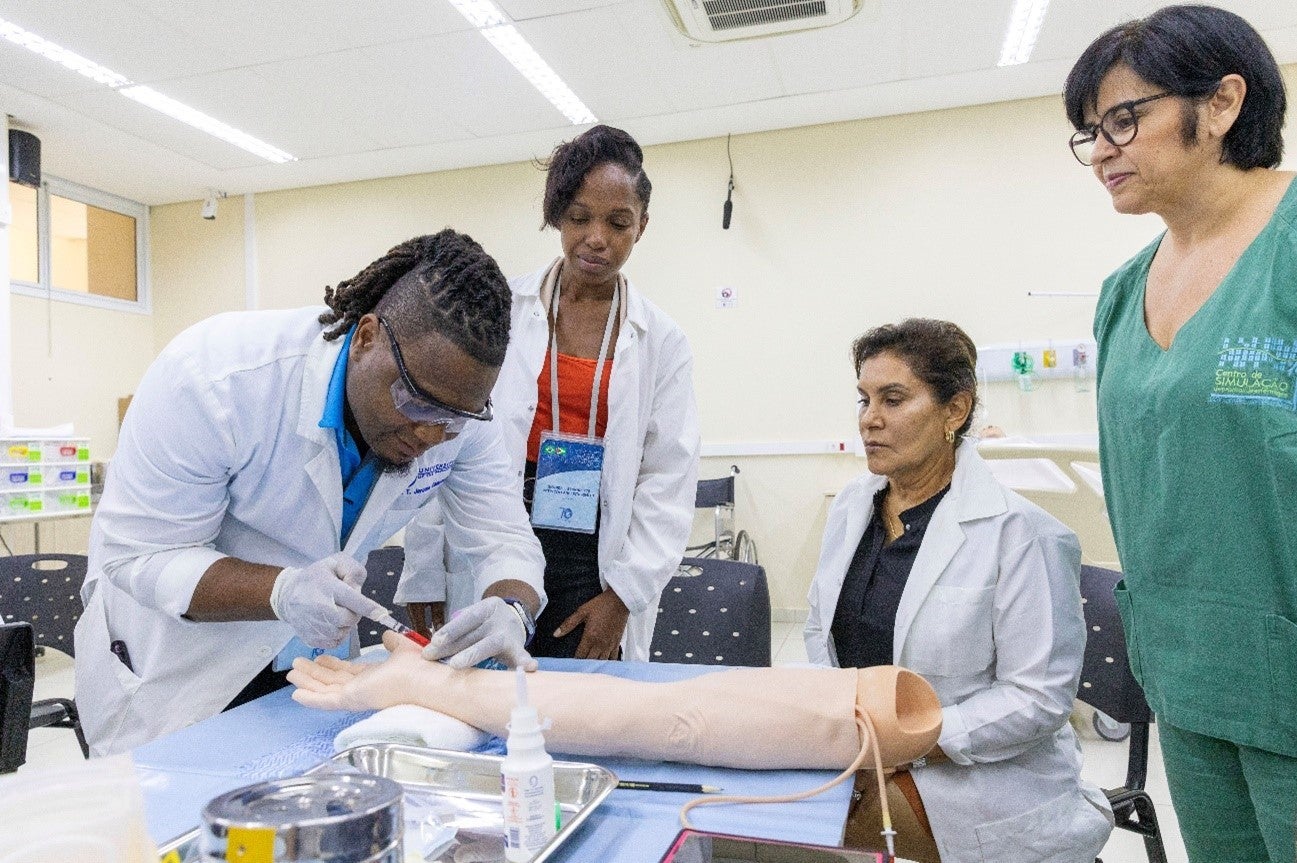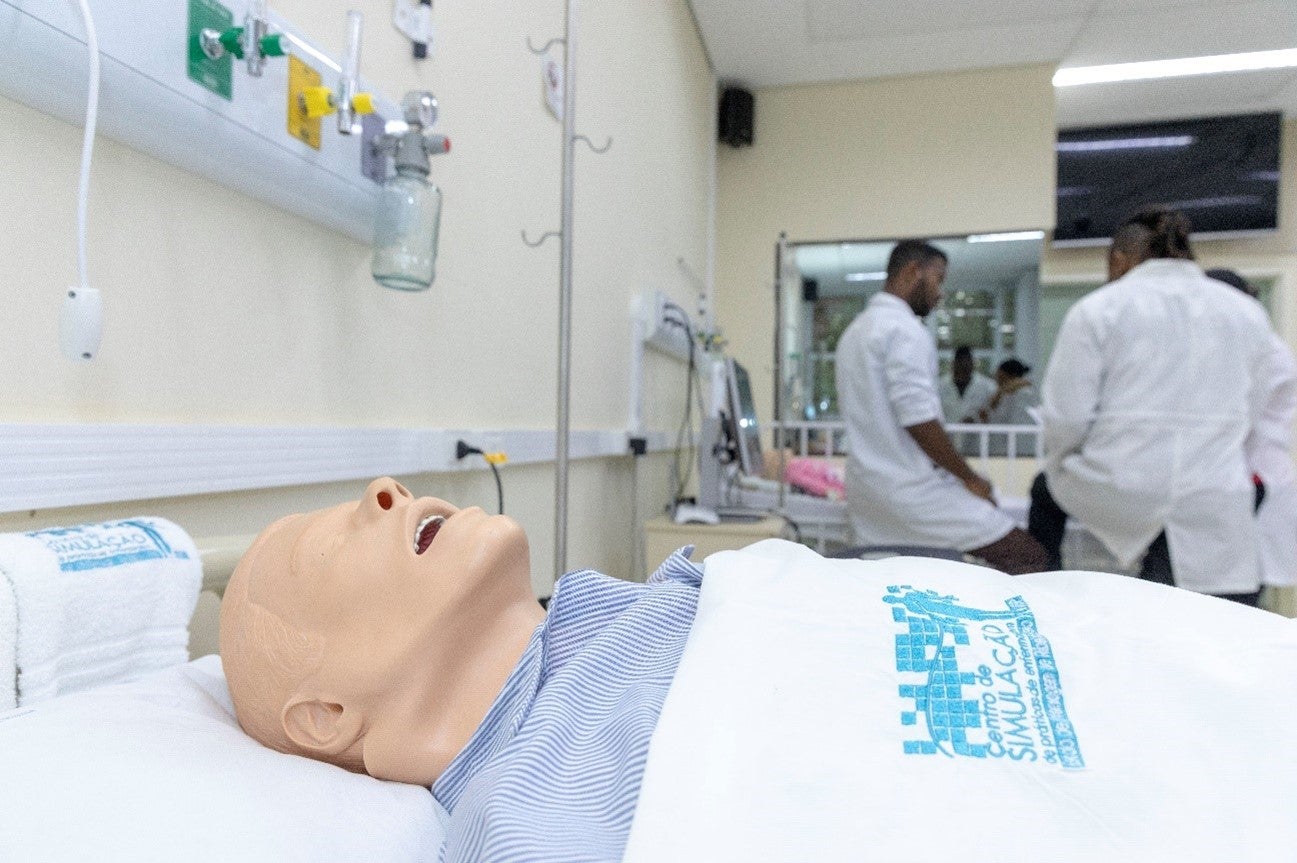Brasilia, 20 October 2023 - Nursing instructors from Guyana and five other Caribbean countries and territories participated in a training course in Brazil on clinical simulation, an educational methodology that recreates professional practice scenarios in a controlled, participatory, and interactive setting.
The training took place last September, promoted by the University of São Paulo's Ribeirão Preto College of Nursing (EERP-USP), which is the Collaborating Center of the Pan American Health Organization (PAHO) and the World Health Organization (WHO) for the Development of Nursing Research.
Since 2016, this training has been part of a cooperation agreement between the collaborating center and the Government of Guyana, aimed at strengthening the country's project to develop its nursing curriculum, which is being restructured in technical cooperation with PAHO.
According to the director of the PAHO/WHO collaborating center, Carla Ventura, the training in Brazil enabled the exchange of knowledge and tools so that Caribbean educators can implement clinical simulation techniques and methodologies to improve nursing education in their countries.
"Within the clinical area of this project, which is crucial and necessary for nursing, we identified the need to establish simulation laboratories. However, they are still in the process of acquiring these materials and organizing the physical structure in Guyana, and we saw the opportunity to create this course so that they could also get to know our reality," Ventura said.
The need to strengthen the training of nursing professionals is shared by many countries in the Region of the Americas that are facing shortages of human resources. With PAHO's support, five other Caribbean countries – Grenada, Antigua and Barbuda, Bahamas, Barbados, and the Turks and Caicos Islands – were also invited to send professionals for this training.
During a visit to Brazil last July, PAHO Director Jarbas Barbosa met with teams from the Collaborating Center for the Development of Nursing Research in São Paulo, where he highlighted the importance of this type of cooperation to strengthen human resources training in the Americas. For PAHO, the nursing workforce is one of the key elements for building resilient health systems that respond to the health needs of the population and advancing towards greater health equity.
Preparing the scenarios
The delegation of 22 nursing instructors participated in a series of activities in Ribeirão Preto, in the state of São Paulo, from 18 to 29 September. Participants were able to learn more about the services of Brazil's Unified Health System (SUS) by visiting various facilities.
After the visits and classroom activities, the instructors were able to put into practice what they learned about how to create scenarios, including make-up (wounds, blood, etc.) to support learning through simulated practical exercises.
Preparation of the simulation scenarios was one of the most important elements of the training. The instructors had the opportunity to construct scenarios that they had suggested and that had been adapted to their countries' needs. The methodology for constructing scenarios is based on the guidelines of the International Nursing Association for Clinical and Simulation Learning (INACSL).
The tutors, divided into four groups, constructed scenarios for seizure management, postpartum hemorrhage, acute respiratory syndrome, and patient communication.
The seizure management scenario was tested with two instructors acting as nurses, two as facilitators, and one as a patient. The other participants observed the simulation and took notes. After the simulation, the activity was evaluated.
Professor Fernanda Gimenes de Sousa explained that the activity "allowed for an understanding of the different roles in a simulation scenario, the importance of planning the scenario, and the different phases of the simulation and how they work together, as well as the importance of providing clues to students during the training." It also helped to "consolidate knowledge by connecting the previous day’s material with this practical activity," she said.
Simulated make-up
Using the 'moulage' technique, the instructors learned how to apply make-up to prepare simulated exercises. They practiced with moulages of burns, wounds, body fluids (vomit, feces, and blood), and 'diabetic foot' (wounds that sometimes present in patients with uncontrolled diabetes and that do not heal).
According to Professor Lucila Castanheira Nascimento, the objective of the activity was to show participants how to adapt the technique to the available resources for effective and reliable learning.
One of the participants in the training, Blessing Josiah, said moulage is a simple but valuable tool to make scenarios more realistic and engaging. "I learned that simplicity is important in simulations. It helps students focus on clear goals and not feel overwhelmed by the complexity of the simulation process," said the educator, who lives in the Turks and Caicos Islands and works at Turks and Caicos Islands Community College, the only public institution of higher learning in the country that trains nurses.
Different simulations
Simulation techniques are divided into low-, medium-, and high-fidelity. Professor Gimenes explained that each technique has an objective and that low fidelity focuses on skills development. This means a less complex or elaborate space in which participants often focus on a particular body part or action.
The laboratory facilities of the Ribeirão Preto College of Nursing offer settings similar to those found in hospitals, health units, and homes. The facilities also have the necessary teaching infrastructure, ranging from basic procedural skills (with non-interactive mannequins) to realistic simulations supported by highly complex technologies (with interactive mannequins). This makes it possible to develop most professional practice scenarios in a controlled, participatory, interactive environment.
Participants also learned two low-fidelity techniques, one in a scenario with pregnant women and the other with a choking child.
Practical work also included another low-fidelity simulation of arterial puncture. In groups, participants found out how to obtain an arterial blood sample to analyze oxygen, carbon dioxide, and acid-base balance levels.
For the simulation, 28 steps were followed, ranging from hand hygiene with soap and water or alcohol-based gel to patient orientation, locating the radial artery to be punctured, correct waste disposal, transportation, recording of patient data, and interpretation of the results.
Nicola Nero, from Guyana, highlighted the importance of learning how to create simulated scenarios with different levels of fidelity at different stages, using models, human organ samples, and parasitology. She said the knowledge gained would be disseminated in her country.
"I intend to return to Guyana and provide training to other faculty members (nurse educators), who will then pass on their knowledge and skills to nursing students. For the first time, our country has taken a hybrid approach to the professional nursing education program and will use this simulation training to guide Guyanese students," said Nero, a nursing officer working at the Ministry of Health of Guyana in the area of Health Sciences Education.
During the training, the educators also participated in a high-fidelity scenario where they had to identify risk factors for bronchopulmonary aspiration, a condition in which food, liquids, saliva, or vomit are aspirated through the airways. This is related to enteral nutrition, a way of feeding patients who should not or cannot eat by mouth. The simulation was based on the scenario of a 67-year-old patient admitted to the clinical ward for treatment of malnutrition related to liver cirrhosis.
This type of simulation provides a series of patient/student interactions in which the patient blinks, moves the rib cage, cries, and coughs. From the control room, teachers interact with students; in the simulator, the patient's responses change based on the students' decision-making.
The training concluded with group evaluations of the activities.
Next steps include monitoring the performance of the teachers who participated in the training to determine the impact on the availability of nursing professionals with comprehensive, innovative training. In addition, PAHO will systematize and share the experience with other countries, in coordination with the Ribeirão Preto College of Nursing of the University of São Paulo.
More photos of the training: https://flic.kr/s/aHBqjAXkDM

